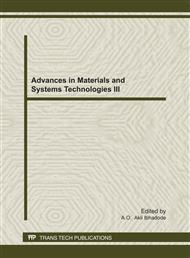p.753
p.779
p.795
p.801
p.807
p.815
p.827
p.831
p.839
Integrated Solid Waste Management System – A Case Study of Solid Waste Source Sorting Alternative in a Tertiary Institution in Nigeria
Abstract:
In most developing countries, solid waste components are generally commingled. Sorting of solid waste is one of the most important activities in the material recovering process of the integrated solid waste management system. If solid waste is sorted, about 30% of the work is done. Several methods exist for sorting comingled solid waste. The work presented in this paper involved the study of solid waste source sorting alternatives in Nigerian Universities. A site-specific study was carried out to characterize the solid waste generated in the University of Benin. Alternative concepts for sorting of solid waste were considered and evaluated. Source sorting was then selected for this study. The study revealed that about 14.56% of biodegradables, 42.26% of plastics, 39.62% of paper waste and 3.56% of metal waste are generated in the office and classroom areas of University of Benin. The study also showed that there is poor attitude to solid waste issues as the maximum cooperation realized on source sorting of solid waste was only about 50% for the waste-bin designated for plastic. The results obtained from the study also indicated that intensive sensitization of the generators on the benefits of source sorting is required for effective source sorting.
Info:
Periodical:
Pages:
807-814
Citation:
Online since:
October 2011
Authors:
Keywords:
Price:
Сopyright:
© 2012 Trans Tech Publications Ltd. All Rights Reserved
Share:
Citation:


